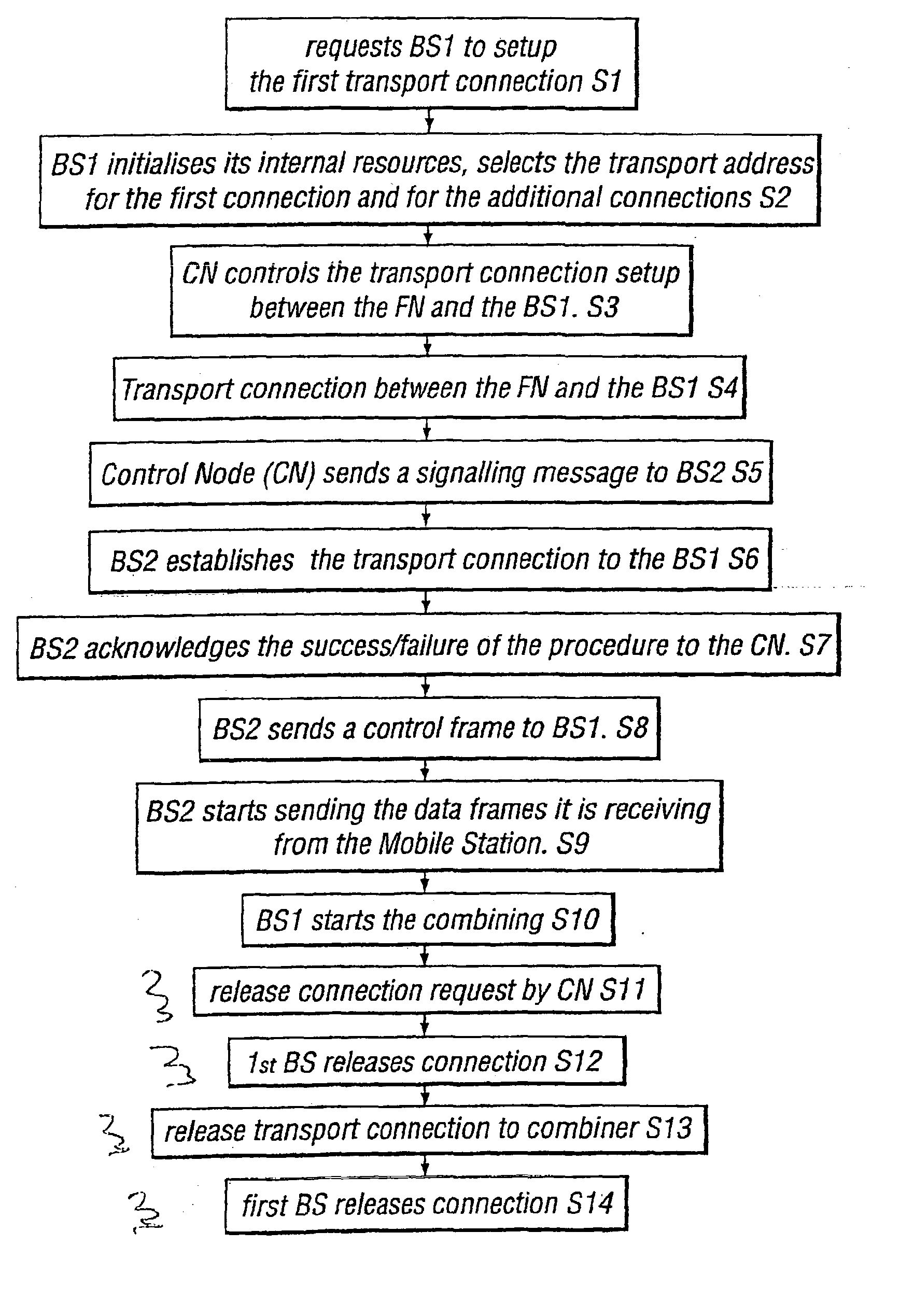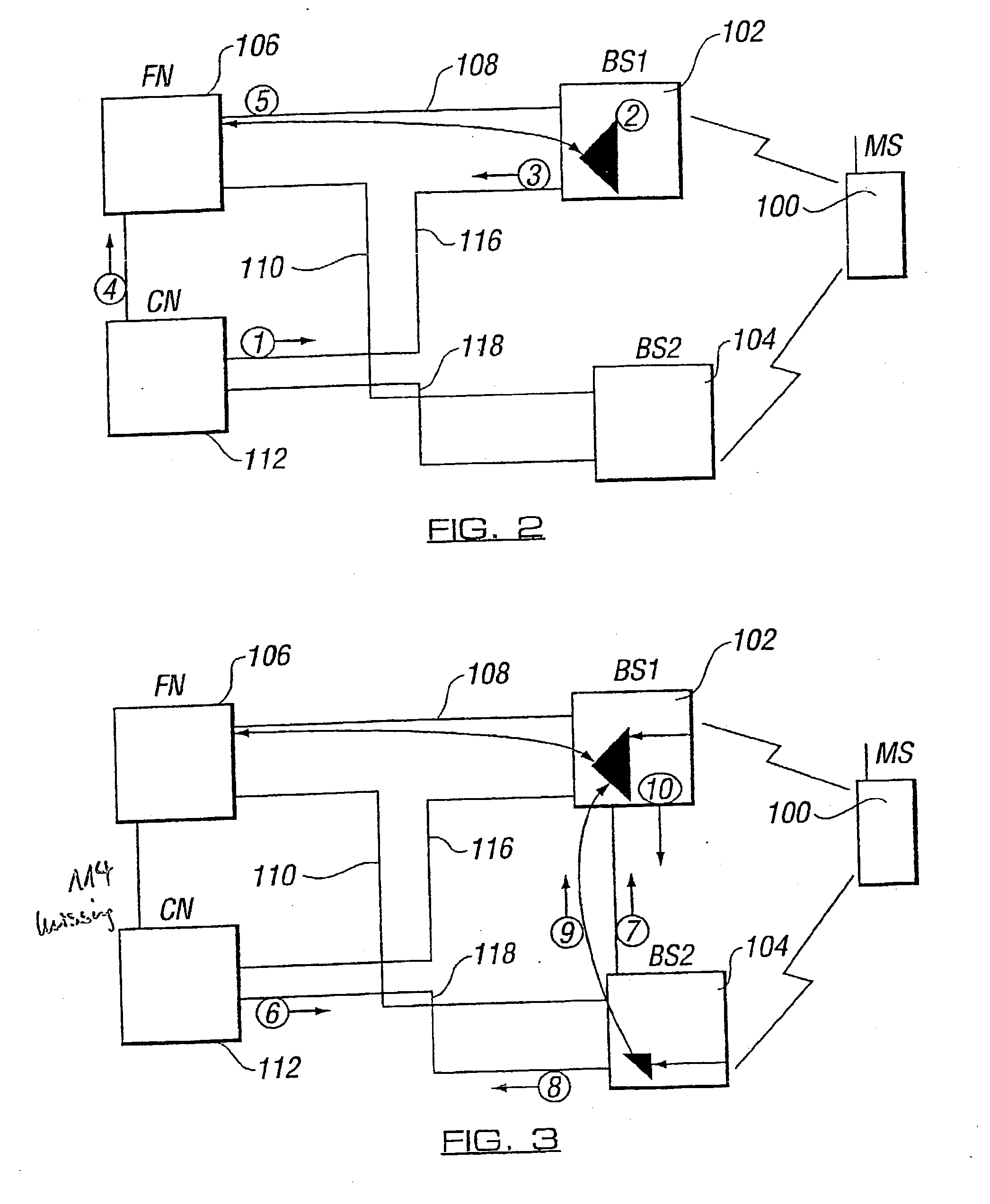Macrodiversity system with signal combining in the base station
a technology of signal combining and rotary switch, which is applied in the direction of site diversity, wireless commuication services, diversity/multi-antenna systems, etc., and can solve problems such as delay introduction
- Summary
- Abstract
- Description
- Claims
- Application Information
AI Technical Summary
Problems solved by technology
Method used
Image
Examples
Embodiment Construction
[0021] Reference will first be made to FIG. 1 in which three cells 2 of the cellular telecommunications network are shown. Each cell 2 is served by a respective base transceiver station (BTS) 4. Each base transceiver station is arranged to transmit signals to and receive signals from the mobile stations 6 located in the cell associated with the given base transceiver station 4. Likewise, each mobile station 6 is able to transmit signals to and receive signals from the respective base transceiver station 4.
[0022] The embodiment of the invention is described in the context of a code division multiple access system. However it should be appreciated that embodiments of the present invention can be used with other types of multiple access system such as time division multiple access, other spread spectrum techniques, frequency division multiple access as well as hybrids of one or more of the access techniques discussed above.
[0023] With the proposed new CDMA standard, macrodiversity is p...
PUM
 Login to View More
Login to View More Abstract
Description
Claims
Application Information
 Login to View More
Login to View More - R&D
- Intellectual Property
- Life Sciences
- Materials
- Tech Scout
- Unparalleled Data Quality
- Higher Quality Content
- 60% Fewer Hallucinations
Browse by: Latest US Patents, China's latest patents, Technical Efficacy Thesaurus, Application Domain, Technology Topic, Popular Technical Reports.
© 2025 PatSnap. All rights reserved.Legal|Privacy policy|Modern Slavery Act Transparency Statement|Sitemap|About US| Contact US: help@patsnap.com



